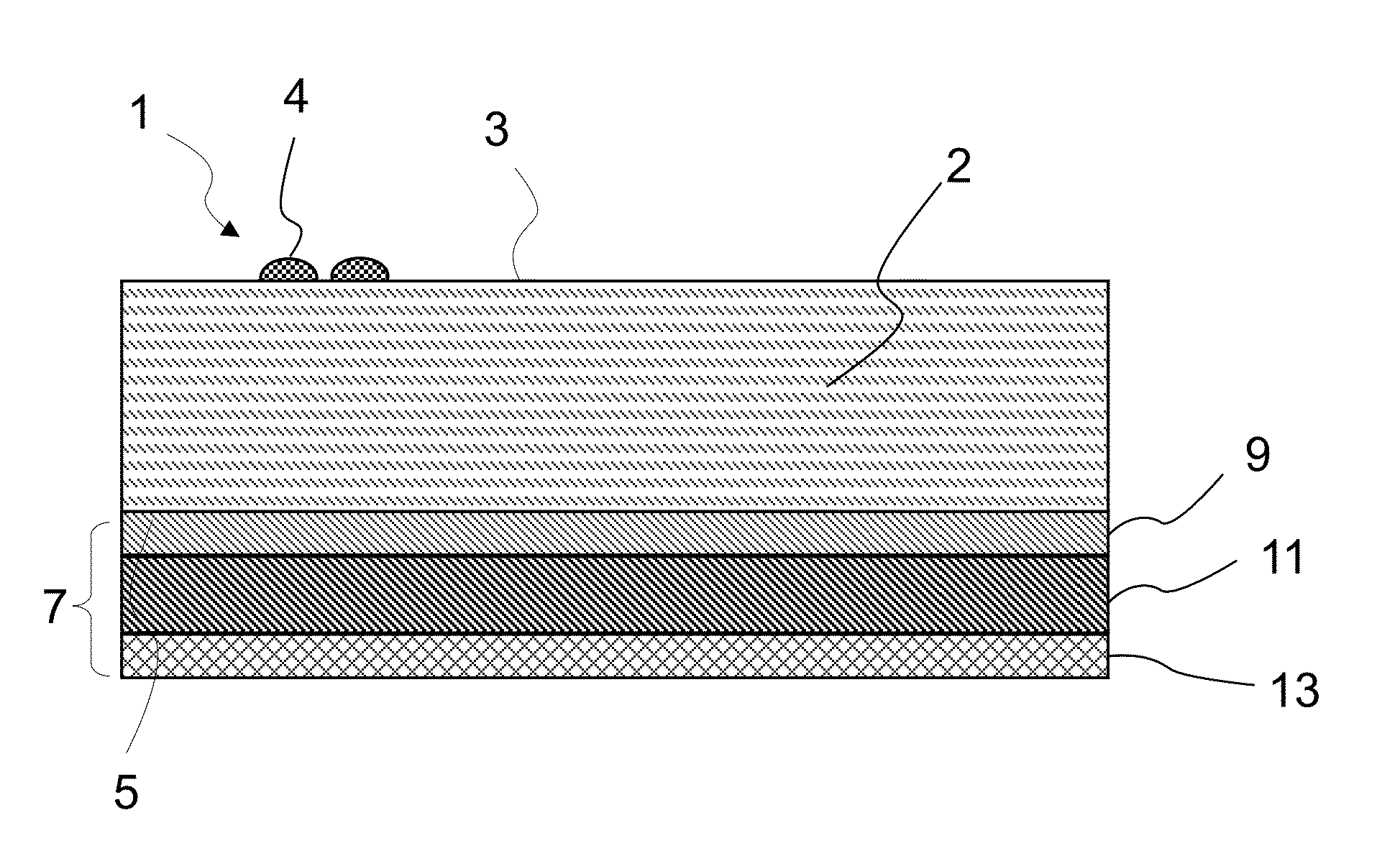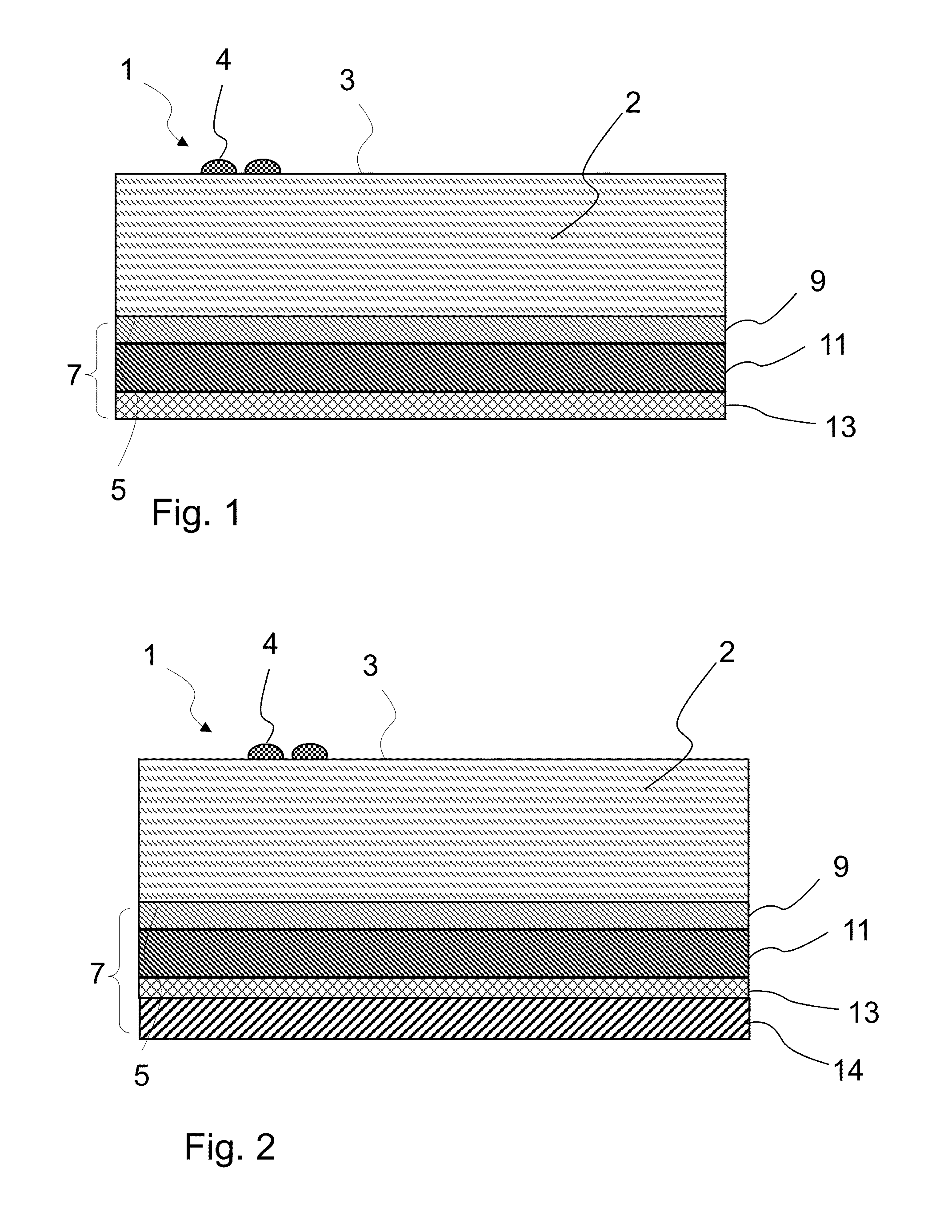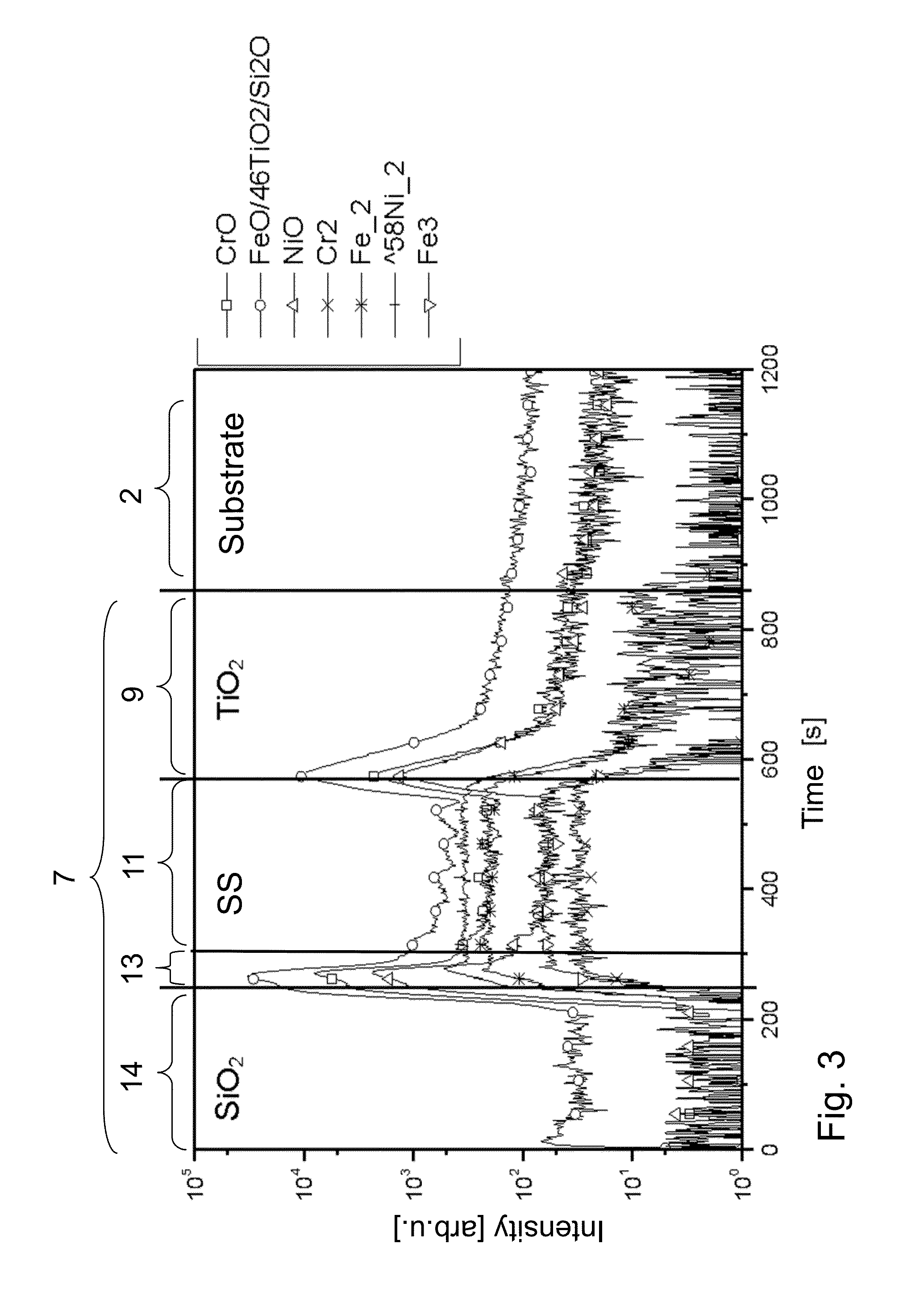Coated glass ceramic plate
a technology of glass ceramic plate and coating, applied in the field of decorative coating, can solve the problems of mixed systems of oxides and nitrides, color is rather rare, and the layer system is subject to certain limitations on the possible combinations of materials, etc., and achieves excellent adhesion promoter, easy manufacturing, and easy manufacturing
- Summary
- Abstract
- Description
- Claims
- Application Information
AI Technical Summary
Benefits of technology
Problems solved by technology
Method used
Image
Examples
Embodiment Construction
[0050]The coated glass ceramic cooking plate 1 shown in FIG. 1 has a face 3 that constitutes a utilization side and defines the upper surface of a cooktop in its installed state. On the upper surface, a decoration pattern 4 may be applied, for example in form of labels, symbols, or to indicate the hot zone or display areas.
[0051]The opposite face 5 of glass ceramic cooking plate 1 defines the lower surface which in its installed state covers the substructure of the cooktop. In order to visually hide such a substructure, for example electrical equipment and / or gas conduits, lower surface 5 is provided with an opaque multilayer coating 7. This multilayer coating 7 on the glass ceramic 2 of glass ceramic cooking plate 1 comprises a first, at least partially transparent layer 9 which may be formed by a single or a plurality of layers. According to one embodiment of the invention, the first layer 9 comprises a layer of titanium oxide (TiO2).
[0052]On this first, at least partially transpa...
PUM
| Property | Measurement | Unit |
|---|---|---|
| thickness | aaaaa | aaaaa |
| temperature | aaaaa | aaaaa |
| thickness | aaaaa | aaaaa |
Abstract
Description
Claims
Application Information
 Login to View More
Login to View More - R&D
- Intellectual Property
- Life Sciences
- Materials
- Tech Scout
- Unparalleled Data Quality
- Higher Quality Content
- 60% Fewer Hallucinations
Browse by: Latest US Patents, China's latest patents, Technical Efficacy Thesaurus, Application Domain, Technology Topic, Popular Technical Reports.
© 2025 PatSnap. All rights reserved.Legal|Privacy policy|Modern Slavery Act Transparency Statement|Sitemap|About US| Contact US: help@patsnap.com



